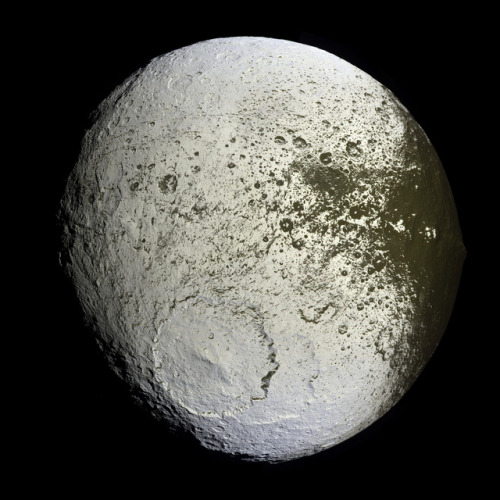You Are Welcome 😀😀
You are welcome 😀😀
More Posts from Drunkscience4u and Others

The Juno mission has been revealing angles of Jupiter we’ve never seen before. This photo shows Jupiter’s northern temperate latitudes and NN-LRS-1, a.k.a. the Little Red Spot (lower left), the third largest anticyclone on Jupiter. The Little Red Spot is a storm roughly the size of the Earth and was first observed in 1993. As an anticyclone, it has large-scale rotation around a core of high pressure and rotates in a clockwise direction since it is in the northern hemisphere. Jupiter’s anticyclones seem to be powered by merging with other storms; in 1998, the Little Red Spot merged with three other storms that had existed for decades. (Image credit: NASA/JPL-Caltech/SwRI/MSSS/Gerald Eichstaedt/John Rogers; via Bad Astronomy)

SpaceX has plans to send two private citizens around the Moon, CEO Elon Musk announced today.
It will be a private mission with two paying customers, not NASA astronauts, who approached the company. The passengers are “very serious” about the trip and have already paid a “significant deposit,” according to Musk. The trip around the Moon would take approximately one week: it would skim the surface of the Moon, go further out into deep space, and loop back to Earth — approximately 300,000 to 400,000 miles.
The plan is to do the trip in the second quarter of 2018 on the Crew Dragon spacecraft with the Falcon Heavy rocket, which is due to do its maiden launch this summer. Of course, Musk is well-known for his unrealistic deadlines — in 2011, he promised to put people in space in just three years.
The two people going on the trip, who weren’t named, already know each other. They will begin initial training for the trip later this year. Musk declined to comment on the exact cost of the trip, but said it was “comparable” or a little more than the cost of a crewed mission to the International Space Station. For context, one ticket on the Russian Soyuz rocket costs NASA around $80 million.
Continue Reading.

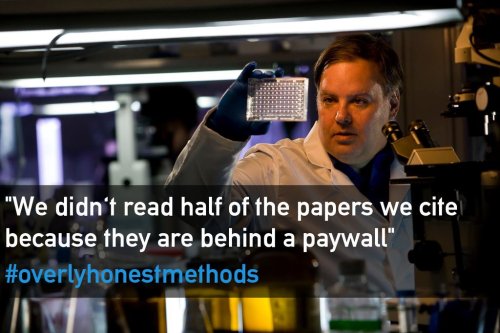
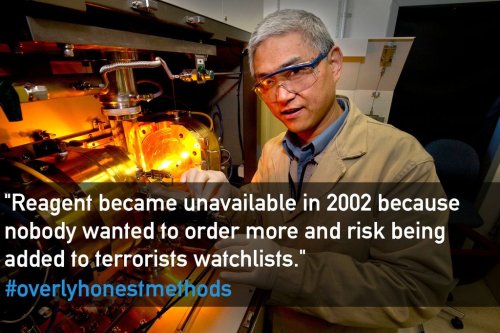
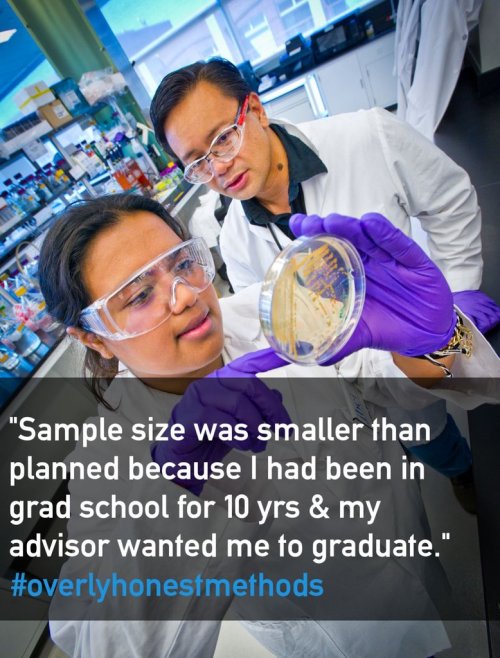
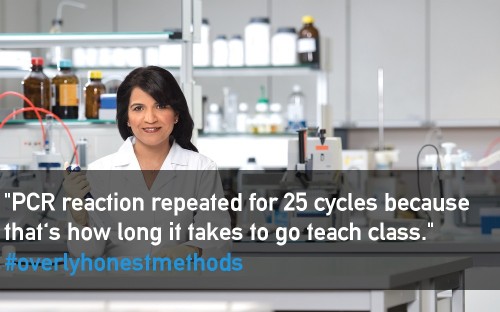


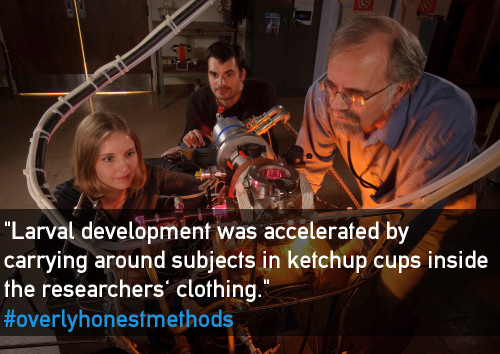
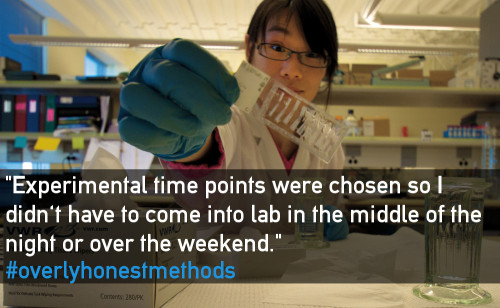
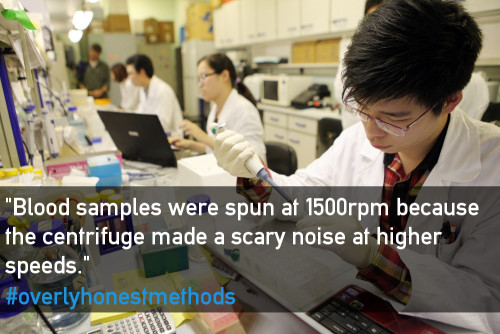
When scientists get too honest
> I would love to see more science posts on Tumblr. I particularly liked, “The postdoc who did all the work has since left to start a bakery.”
https://www.facebook.com/drunkscience4u/videos/1418162364863308/
We all know this struggle, Cylinder. We all know. March 4, we make their dreams come true on YouTube! Tune in!
Did you hear about the wooden statue that crashed a train
It was a bad conductor


Cloud Chambers: Visualizing Radiation
The cloud chamber, also known as the Wilson chamber, is a particle detector used for detecting ionizing radiation.
In its most basic form, a cloud chamber is a sealed environment containing a supersaturated vapor of water or alcohol. When a charged particle (for example, an alpha or beta particle) interacts with the mixture, the fluid is ionized. The resulting ions act as condensation nuclei, around which a mist will form (because the mixture is on the point of condensation).
The high energies of alpha and beta particles mean that a trail is left, due to many ions being produced along the path of the charged particle. These tracks have distinctive shapes, for example, an alpha particle’s track is broad and shows more evidence of deflection by collisions, while an electron’s is thinner and straight. -(x)
More science and gifs on my blog: rudescience Gif made from: This video by The Royal Institution References: (x), (x).
-
 ranibani11 liked this · 2 years ago
ranibani11 liked this · 2 years ago -
 ollendangerous liked this · 2 years ago
ollendangerous liked this · 2 years ago -
 lovemyjourney reblogged this · 3 years ago
lovemyjourney reblogged this · 3 years ago -
 stuey69 liked this · 3 years ago
stuey69 liked this · 3 years ago -
 nerdsgaysandarcherybabes liked this · 4 years ago
nerdsgaysandarcherybabes liked this · 4 years ago -
 pinkauthorclouddiplomat liked this · 4 years ago
pinkauthorclouddiplomat liked this · 4 years ago -
 joinit2000 liked this · 4 years ago
joinit2000 liked this · 4 years ago -
 ralucarin liked this · 4 years ago
ralucarin liked this · 4 years ago -
 mobayer liked this · 4 years ago
mobayer liked this · 4 years ago -
 lilsapphira liked this · 4 years ago
lilsapphira liked this · 4 years ago -
 psychiclovekid liked this · 4 years ago
psychiclovekid liked this · 4 years ago -
 dreamer9817 liked this · 5 years ago
dreamer9817 liked this · 5 years ago -
 muposcar-befu-blog liked this · 5 years ago
muposcar-befu-blog liked this · 5 years ago -
 cantthinkfoabettername liked this · 5 years ago
cantthinkfoabettername liked this · 5 years ago -
 cydigia1010 liked this · 5 years ago
cydigia1010 liked this · 5 years ago -
 a11yssa liked this · 5 years ago
a11yssa liked this · 5 years ago -
 lollyase liked this · 5 years ago
lollyase liked this · 5 years ago -
 blipblipbloop liked this · 5 years ago
blipblipbloop liked this · 5 years ago -
 fruitandfelines liked this · 5 years ago
fruitandfelines liked this · 5 years ago -
 choccymilky liked this · 5 years ago
choccymilky liked this · 5 years ago -
 expolinelover-moved liked this · 5 years ago
expolinelover-moved liked this · 5 years ago -
 emeralds-hell-corner liked this · 5 years ago
emeralds-hell-corner liked this · 5 years ago -
 s0ggyrats reblogged this · 5 years ago
s0ggyrats reblogged this · 5 years ago -
 s0ggyrats liked this · 5 years ago
s0ggyrats liked this · 5 years ago -
 jzyshsusi reblogged this · 5 years ago
jzyshsusi reblogged this · 5 years ago -
 jzyshsusi liked this · 5 years ago
jzyshsusi liked this · 5 years ago -
 pdivy liked this · 5 years ago
pdivy liked this · 5 years ago -
 lavenderlattestudy liked this · 5 years ago
lavenderlattestudy liked this · 5 years ago -
 zicknette liked this · 5 years ago
zicknette liked this · 5 years ago -
 youthinkyoucantellheavenfromhell liked this · 5 years ago
youthinkyoucantellheavenfromhell liked this · 5 years ago -
 unlikelyfestivalgiantpurse liked this · 5 years ago
unlikelyfestivalgiantpurse liked this · 5 years ago -
 likeavalanche liked this · 5 years ago
likeavalanche liked this · 5 years ago -
 fishingisuniversal reblogged this · 5 years ago
fishingisuniversal reblogged this · 5 years ago -
 fishingisuniversal liked this · 5 years ago
fishingisuniversal liked this · 5 years ago -
 imaginativefanatic reblogged this · 5 years ago
imaginativefanatic reblogged this · 5 years ago -
 imaginativefanatic liked this · 5 years ago
imaginativefanatic liked this · 5 years ago -
 little-violet-viper liked this · 5 years ago
little-violet-viper liked this · 5 years ago -
 goblimboi-blog reblogged this · 5 years ago
goblimboi-blog reblogged this · 5 years ago -
 goblimboi-blog liked this · 5 years ago
goblimboi-blog liked this · 5 years ago -
 atsiparas1-blog liked this · 5 years ago
atsiparas1-blog liked this · 5 years ago -
 letsuniversblog-blog liked this · 5 years ago
letsuniversblog-blog liked this · 5 years ago -
 amoebab liked this · 5 years ago
amoebab liked this · 5 years ago -
 sergioedwards-blog1 liked this · 5 years ago
sergioedwards-blog1 liked this · 5 years ago -
 panybailongo liked this · 5 years ago
panybailongo liked this · 5 years ago -
 corvidandcryptid reblogged this · 5 years ago
corvidandcryptid reblogged this · 5 years ago
The official page of Drunk Science! An enthusiastic host performs simple experiments and then humorously explains the science behind the result, all while visibly drunk.
126 posts


